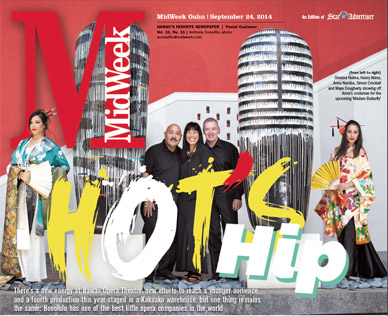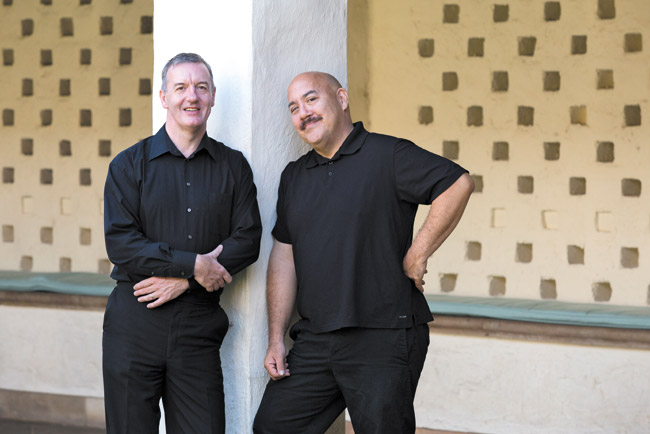HOT’s Hip
There’s a new energy at Hawaii Opera Theatre, new efforts to reach a younger audience and a fourth production this year staged in a Kakaako warehouse, but one thing remains the same: Honolulu has one of the best little opera companies in the world
What do you picture when you hear “opera?” If you envision stuffiness and mothballs, Hawaii Opera Theatre artistic director Henry Akina and executive director Simon Crookall are about to turn that vision on its head.
“Just before I came on board with HOT (mid-last year), a big piece of market research was done,” says Crookall. “The analysis of the audience said that they are elderly, rich and privileged, but the research also said that one reason people don’t want to go to HOT is because of the word ‘opera.’ You’ve got to get rid of the word opera. I said what’s the point, we’re an opera company. It’s not getting rid of the word, it’s making the word seem more accessible and getting people to realize that opera isn’t this highfalutin, incredibly erudite thing for the upper classes.”
To that effect, the two men have been creative in nurturing stalwart supporters while also pumping new life blood into HOT. They’re reaching out to younger generations and branching into novel territory.
But first, what might make opera appealing to someone who knows nothing of the stylized art form, with its highly cultivated vocal mastery, its single-monikered composers such as Puccini, Wagner and Verdi, and musical vocabulary that flings around terms like baritone, mezzo and aria?
“The gladiatorial aspect of opera is what makes it exciting. People are singing their guts out,” says Akina.
His visceral description is nearly literal. Indeed, opera performers are vocal Olympians, with such physically demanding roles that if you’ve ever wondered why shows hop across Friday, Sunday and Tuesday, it’s because that one-day break is a necessity.
This season’s opera kicks off with the ever-popular Madam Butterfly Oct. 10, 12 and 14. We’re all familiar with this popular tragedy from Puccini: Japanese woman falls for American navy man. They part, and when they next meet, he discovers Butterfly has borne him a son, while she heartbreakingly discovers he has since married another woman. With Akina directing, fashion designer Anne Namba on costumes and master architect Dean Shibuya on set, this sounds like a thoroughly local production. But here’s the twist: The opera was produced originally this past March by Finland’s renowned Savonlinna Opera Festival. All three experts did their work in Finland, and the set and costumes are now on their way to Hawaii, where Akina will again direct.
“A barge with a set from Finland is coming down the Panama Canal as we speak,” notes Crookall. “We’re in the middle of the ocean, so having an opera come to Hawaii is a bit of a crazy thing in the first place. It’s a minor miracle that we’re able to put on a full-scale
Butterflywith all the best singers in the world.”
Hawaii does not have under-studies, nor do we have backup performers. Crookall recalls hearsay about places such as The Met, where they’ve needed to call for backup first thing in the morning and the singer gets on a plane and is on stage by the time curtains go up in the evening. Such luxuries aren’t feasible in Hawaii.
To secure top global talent, Akina auditions three years out at home and in New York. Some operas, including last season’s Turandot, are massive undertakings with 100 performers on stage at a time. Despite making use of 300 volunteers, turning local operas into the grand-scale affairs that they are can accrue a production price tag of up to $1 million, what with flying over the illustrious-voiced stars, making use of Hawaii Symphony, procuring tech and production folks, not to mention the resources that go into producing eye-popping costumes and sets.
This season follows the theme “Life-Changing Journeys,” as each opera involves a journey by ship as well as a personal, metaphorical journey. Following Butterfly is The Flying Dutchman, which will again be importing not only set and costumes, but also the same key singers, this time from New York’s Glimmerglass Festival.
“Flying Dutchman is a Germanic opera, one of Wagner’s most popular,” says Akina. “It reflects a sea journey Wagner took. It’s one of the stormiest scores we know. One conductor described that you open the score and a storm comes out at you.”







